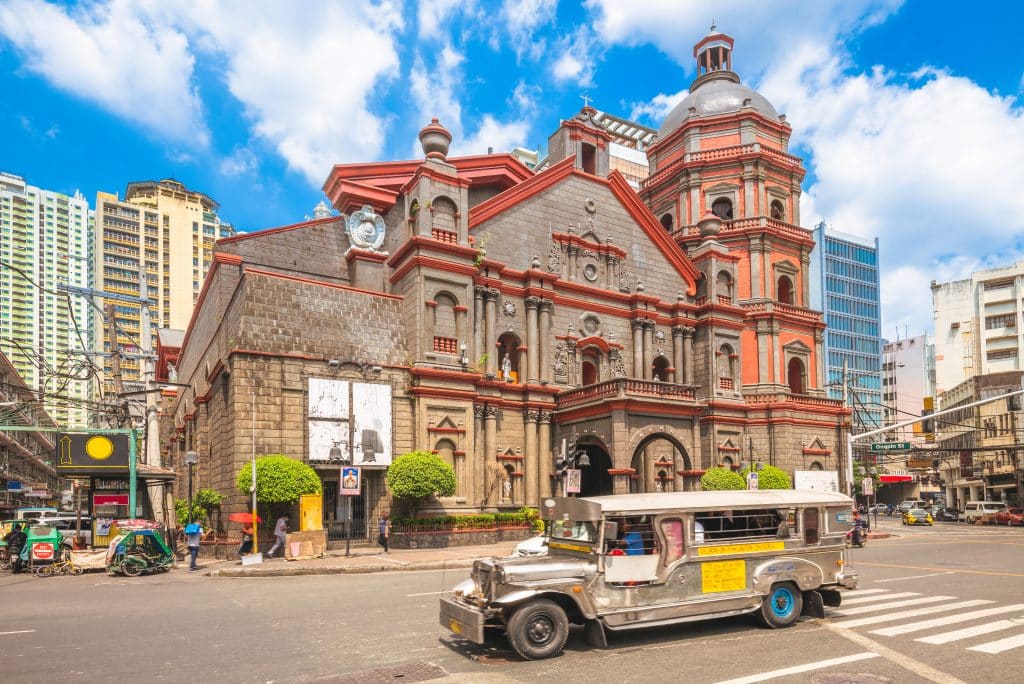Kratom has been used as a medicinal botanical for centuries in Southeast Asia. Most of the world’s kratom comes from Indonesia; however, these exotic evergreen trees are grown in bountiful quantities in Malaysia, Vietnam, Thailand, Bali, Myanmar, and the Philippines.
In small doses, kratom gives off very uplifting and stimulating effects, an experience that’s comparable to a robust cup of coffee or an energy drink. Kratom’s effects transform into something much heavier, relaxing, and sedating in larger doses.
Since kratom can alter your state of mind and be considered mildly psychoactive, many countries within Southeast Asia have decided to ban the plant.
Although, this is not the case for the Philippines, as kratom is currently legal.
Kratom Legality In the Philippines & Elsewhere
As of right now, kratom is legal in the Philippines. Residents can purchase and use the plant without worrying about any repercussions. However, this isn’t the case for all countries within Southeast Asia.
In the Philippines, Mitragyna speciosa, or kratom, is called “mambog.” While kratom currently grows in substantial amounts in the country, it’s said that it is not native. Legend has it that it was brought over back in the 1800s, and some have related the term “mambog” to the region of Mambog, Philippines.
Indonesia has made plans to ban the plant in 2024, which could potentially cause a collapse of the global kratom market. It’s also prohibited in Vietnam and Malaysia, where it’s regulated under Malaysia’s Poison Act of 1952, making it an offense to harvest or sell the botanical. Kratom was illegal in Thailand, but the country recently reversed its ban.
While kratom is banned in certain countries within Southeast Asia, illegal use is still prominent because the tree grows natively.
Can I Buy Kratom In the Philippines?
Yes, you can legally buy kratom in the Philippines.
Some local vendors can be found in stores and shops throughout the Philippines; that may be a good option if you’re a resident. Getting kratom close to the source is always a bonus, so if you currently live there, you should research and find out where you can purchase products locally.
If you don’t want to go out and find kratom, you can always order kratom online since kratom is legal in this country.
Whether you find a local vendor or opt for online shopping, you should always make sure you’re buying from a trusted, reliable source.

Why Is Kratom Banned In Other Countries?
Residents and travelers visiting the Philipines will be able to obtain kratom and use it without being concerned about legal consequences.
However, this is not the same story for many other countries. Most of the concern surrounding kratom stems from public safety, as the plant is known to have opioid-like effects. This causes governments to want to regulate or ban it, preventing abuse.
In large doses, kratom can be overwhelmingly potent. The more you take, the heavier it will be. This can help many individuals who struggle with insomnia and restlessness, but it can also be a target for abuse. These effects are comparable to that of opioids but without severe health complications.
Another theory is that lawmakers may have the pharmaceutical industry in mind, as legalizing natural alternatives to prescription drugs and painkillers could produce a loss of revenue. This may be enough for some to oppose the idea of legalization.
A recent review from the World Health Organization found kratom safe, so there’s hope that this monumental decision will impact kratom’s future.
Kratom Use: A Quick History
In the 1900s, kratom was introduced to the West, where its popularity began booming. A reason why so many were interested was that it was a natural alternative to opioid-based painkillers. The opioid epidemic played a key role in the sudden interest in kratom.
Kratom was traditionally used to treat different health problems, such as fever, insomnia, and diarrhea. Farmers and manual workers also chewed the leaves to help them kick fatigue, relieve pain, and increase productivity.
Kratom’s active compounds and alkaloids work through the same receptors as opioids, which has made it a popular choice for treating opioid addiction and managing withdrawal symptoms. Many individuals also use it for pain management since it can relieve pain and discomfort [1].
Since kratom’s popularity has begun to rise in the United States and Europe, many researchers have dedicated time to observing its medicinal potential.

Kratom Deaths: Can Kratom be Fatal?
In general, kratom is safe and well-tolerated. So, why is there so much conflict over it?
Adverse side effects and overdose cases are also used as a point of argument among lawmakers when deciding whether or not to ban the plant. However, overdose cases associated with kratom aren’t necessarily what people make it out to be.
There have been cases where kratom was found in the body at the time of the overdose, although so were many other more dangerous substances. This leaves a high probability that kratom wasn’t the cause of overdose or death.
Overdose regarding kratom is a gray area, and it seems that it could be kept a mystery for the purpose of banning the plant. For example, the CDC examined unintentional drug overdose with kratom detected.
Their analysis found that in around 80% of kratom-involved deaths, the subjects had a known history of substance abuse, and postmortem toxicology testing detected multiple substances in the body for almost all subjects. Fentanyl was the most frequently identified co-occurring substance, followed by heroin, benzodiazepines, prescription opioids, and cocaine.
This paints a clear picture that kratom was not the reason for these overdoses.
Known Side Effects Of Kratom
Side effects are typically not common in individuals who kratom responsibly. However, abusing the plant could produce some uncomfortable effects.
The most common known side effects of kratom are as follows:
- Gastrointestinal issues/nausea and vomiting
- Sedation/fatigue (maybe a positive for some fighting insomnia)
- Dizziness
- Anxiety/jitters
- Long term abuse can negatively impact liver function
Since the plant can affect the liver and cause bilirubin levels to rise, abusing kratom could also produce jaundice-like symptoms.
The risk for addiction and physical dependence exists, especially for those who abuse this beneficial botanical. Some studies have observed the signs of kratom addiction in natives who have been using the plant for years. Hyperpigmentation was also very common in these individuals, as chewing the leaves of the kratom tree can cause darkening around the cheeks.
The onset of addictions is much slower than opioids, and it simply does not carry the same set of risks. What makes opioids so dangerous is how quickly your tolerance builds and their highly-addictive nature.
Quickly building a tolerance pushes users to take more until their body can’t handle it, resulting in respiratory failure. Kratom has stimulating and sedating effects but doesn’t produce much risk of respiratory failure or overdose.
What Is The Correct Dosage For Kratom?
Kratom dosage varies from person to person. New users should always stick with a small dose. You’ll want to get a feel for how kratom will affect you before you take moderate to large quantities. Stick with 2 grams or less within 24 hours.
You can also microdose, which produces very stimulating effects. Microdosing is taking less than 1 gram.
Bodyweight, pre-existing health conditions, and taking certain medications may affect your dose. Some medicines may cause dangerous interactions, so you’ll probably want to check with your doctor first.

How To Take Kratom Safely
Certain medications can have serious side effects when combined with kratom. Taking kratom safely means you aren’t mixing it with other drugs or substances, including alcohol.
It’s also important to take breaks and to use as little as possible.
There are plenty of safe methods of ingestion when it comes to kratom. Traditionally, the leaves are chewed, or the dried powder is brewed into a bitter, harsh-flavored tea.
There are also capsules. These offer users a discrete, precise dose of kratom whenever they need it — no need to worry about measuring out your loose powder or wasting any. However, capsules are typically more expensive, and you don’t get as much.
You could also purchase the powder and fill your own capsules. This is much more time-consuming but worth it if you want your capsules at a better price.
A much more modern approach would be kratom tinctures or extracts. These are highly potent, and dosage is much different. Extracts can also be a bit more pricey, but you don’t need to take nearly as much as you would with powder or capsules.
Suggested Reading: How to Make Your Own Kratom Tincture

Key Takeaways: Is Kratom Legal In The Philippines?
Kratom is legal in the Philippines.
Kratom is 100% legal in the Philippines as of right now. You can purchase products from local vendors or opt for buying online. Whatever you choose, make sure you get it from a reliable source.
The future for kratom in the Philippines isn’t completely clear, but with its current legal status, it seems as though it will probably remain legal for a while.
- Ismail, I., Wahab, S., Sidi, H., Das, S., Lin, L. J., & Razali, R. (2019). Kratom and future treatment for the opioid addiction and chronic pain: periculo beneficium?. Current drug targets, 20(2), 166-172.

